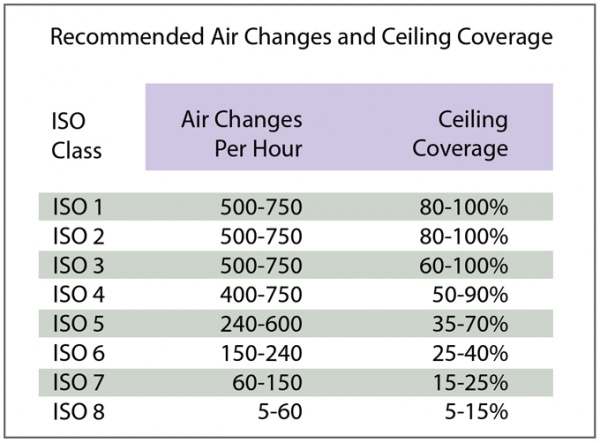By comparison a typical office space would be 5 10 times more dirty.
Iso class 3 clean room standards.
The cleanroom classification standards fs 209e and iso 14644 1 require specific particle count measurements and calculations to classify the cleanliness level of a cleanroom or clean area.
Federal standard 209 in which a class number was a statement of the number of 0 5 micron particles per cubic.
A cleanroom is an enclosed room equipped to control the levels of airborne particulate matter.
Iso class 3 cleanrooms allow up to eight particles 1 µm in size and do not allow any particles larger than 1 µm.
The considered particle sizes lower threshold values applicable for classification in accordance with this international standard are limited to the range from 0 1 µm through.
Positive pressure keeps new particles from entering the clean area.
Note 2 to entry.
1 was withdrawn in 2001 and officially replaced by iso 14644 1 in 1999 but it is still widely used.
The old federal standard 209 class 100 000.
As the process in the cleanroom grows less critical greater quantities of invisible particles may be present without risk thus the numerical classification of the cleanroom will be higher.
Note 3 to entry.
The recommended air changes per hour for an iso class 1 clean room is 500 750 and the ceiling coverage should be 80 100.
Iso class 2 500 750 air changes per hour with a ceiling coverage of 80 100.
A cleanroom must have less than 35 200 000 particles 0 5 micron per cubic meter and 20 hepa filtered air changes per hour.
The class defines a minimum cleanliness level not a specific design.
Classification in accordance with this international standard is limited to the range extending from iso class 1 through iso class 9.
The simple designations of the early u s.
What makes a clean room a cleanroom.
The cleanest cleanroom is a class 1 and the dirtiest a class 9.
In the uk british standard 5295 is used to classify cleanrooms.
This control is achieved by air pressure and filters.
The most common classes are iso 7 and iso 8.
Iso class 3 500 750 air changes per hour with a ceiling coverage of 60 100.
By law federal standard 209e can be superseded by new international standards.
What exactly is cleanroom classification.
Iso 8 is the least clean cleanroom classification.
Iso class 3 is approximately equal to fs209e class 1 while iso class 8 approximately equals fs209e class 100 000.
The particles range in size from 1 5 microns µm.
Iso 14644 1 and older standard fs 209e determine class by the concentration levels of particles.
The equivalent fed standard is class 100 000 or 100 000 particles per cubic foot.

